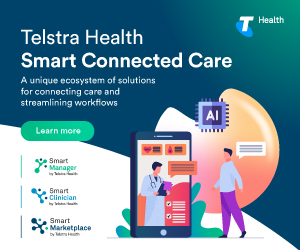Closing the gap on Indigenous health
In the past year, we’ve seen many aspects of the health and wellbeing of Indigenous Australians where improvements are continuing or emerging. But according to the Australian Institute of Welfare the gaps between Indigenous and non-Indigenous Australians are still very significant. This disadvantage, or the ‘gap’ between Indigenous and non-Indigenous Australians, starts from birth and continues throughout life.
The health gap between Indigenous v non-Indigenous Australians
According to the Australian Institute of Welfare, Indigenous Australians suffer a 2.3 times greater rate of burden of disease than non-Indigenous Australians. And 19% of this disease burden could be attributable to mental health disorders.
Meanwhile recent data released from the Heart Foundation revealed deaths Aboriginal and Torres Strait Islander people experience heart disease rates that are 70% higher than in non-Indigenous Australians and experience double the rate of hospitalisations due to heart attack and heart failure.
Government initiatives
To address the health deficit experienced by people living in remote and rural areas, the National Rural Health Alliance recently called for the urgent development of a new National Rural Health Strategy which is supported by robust health access
The partnership and a call to refresh the Closing the Gap process, will be put to COAG for consideration in Adelaide on 12 December, but they are being proposed without the full engagement and endorsement of Aboriginal and Torres Strait Islander Peak Bodies.
Alliance Chief Executive Officer Mark Diamond announced in a recent media release that a fully inclusive Closing the Gap partnership is fundamental to the success of refreshing the Closing the Gap Strategy and needed to be agreed by all levels of government.
“If there is one lesson that we must have learnt by now, it is that the best health outcomes for Aboriginal and Torres Strait Islander people will only be achieved through the full involvement of Indigenous people in determining what action is required and how it should be implemented,” Diamond said. “This is a crucial step. It is essential that we don’t repeat the mistakes of the past – the peak bodies need to be involved otherwise the gap will not close.”
“COAG has made a commitment to work with Aboriginal and Torres Strait Islander people, and a genuine partnership model is the only way to do it.”
Improving Indigenous health with education
In its latest annual report, NACCHO, the national body for Aboriginal primary healthcare in Australia, NACCHO chairperson John Singer said good health outcomes starts with the right tools, resources and education,
“Aboriginal people must have educational opportunities, careers, and health services to meet their needs and overcome inequality, poverty and increase life expectancy,” he said. “Enabling Aboriginal people to live good quality lives while enjoying all their rights and fulfilling their responsibilities to themselves, their families and communities is critical. NACCHO will continue to collaborate with relevant stakeholders to improve care pathways and coordination in our sector.”
NACCHO CEO, Pat Turner, says the organisation will continue to collaborate with Governments, the RACGP, the Australian Medical Association and State Affiliates to further Indigenous health.
“With support from the Commonwealth Government, we are developing a Continuous Quality Improvement Framework, to ensure all Primary Health Care providers deliver culturally competent care to Aboriginal and Torres Strait Islander
peoples and learn from Aboriginal Community Controlled Health Organisations as examples of best practice,” she said. “This work is being done in collaboration with Affiliates and members.”
Supporting remote and rural care with telehealth
Digital health has been widely recognised as high on the agenda to support rural and remote care. This is evidenced further by the Compact, with the ACRRM and the Government planning to collaborate to foster innovation and wider the adoption of digital health strategies. Importantly, the Compact recognises the potential for telehealth to enhance rural health care but not as a replacement for face-to-face services.
“Harnessing the potential of technology to enable ideal healthcare in Australia is especially important for those living in rural and remote areas where access to healthcare and face-to-face patient-clinician consultations are harder to come by,” says Dr Charlotte Middleton, GP and Chief Medical Advisor at MedicalDirector. “Telehealth technologies such as video consultations can help ease workforce challenges as distance no longer impedes the delivery of care – freeing up time, money and resources.”









